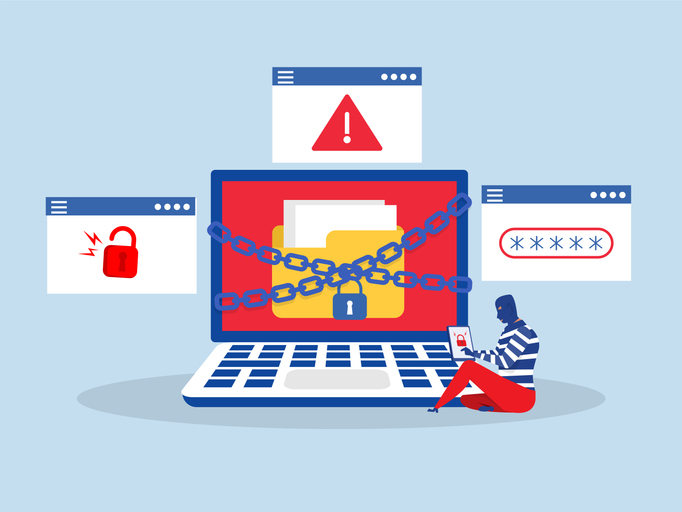Rifle through the pages of any lifestyle magazine offering advice on how to improve your day-to-day existence and, chances are, you’ll find the fabled phrase “work-life balance.” If your profession makes finding that balance easy then appreciate your good fortune. For many, it’s almost impossible to achieve.
According to SolarWinds’ Little-Known Facts survey, IT professionals are particularly prone to be on the wrong side of that ratio, with 27 per cent of respondents saying they receive more texts from their IT monitoring systems each week than they do from loved ones. A telling highlight into work dominated lives both inside and outside the office.
For IT professionals, this should be about as surprising as saying that water is wet and that data breaches are bad. The IT landscape has become increasingly complex and tricky to navigate, with hybrid IT environments, data centre complexities, and ever-more intense end-user demands. All these factors heap more pressure onto the IT professional, whose role is to seamlessly juggle all these responsibilities.
>See also: Mobile devices are hindering IT departments and costing companies
If we aren’t capable of ensuring this, both an organisation and its employees may suffer. Downtime, security breaches, and poor user experience are just some of the disastrous consequences of an organisation shorn of its IT professional’s rigour and discipline. Despite this, and not to bleat too much, we as IT professionals are largely underappreciated.
End-users barely bat their eyelids at the stupendous amount of information and capabilities at their fingertips, all of which has been afforded by the faithful diligence of the IT professional. That is until something goes wrong, when suddenly the IT professional is expected to be at their disposal, immediately.
This week fortunately, we had a moment to collectively share in the great works we do and celebrate international IT Pro Day. Tuesday 19th September was a time to shine a light on many businesses’ unsung heroes, taking a closer look at the way IT professionals’ work-life balance have become so lopsided, and how the actions of the enterprise are tipping the scales to our social lives’ detriment.
Chain of command
Logic dictates that, if your water is poisoned, you should check the well. With this in mind, to understand the plight of the IT professional, it’s important to understand where demand is coming from and why.
For example, one might assume that an inordinate amount of IT professionals’ time is taken up by wet-behind-the-ears newbies, demanding answers to simple questions. The data however, reveals that is not the case.
SolarWinds’ Little-Known Facts survey found that 48% of IT professional respondents said that c-suite and senior executives are one of the top three personnel who create the most IT/technology issues that require an IT professionals’ intervention. Legal, on the other hand, require the least support, as shocking as that might be to believe.
>See also: The shifting role of the IT professional In 2017
This information could be put to use by senior executives, who should be well informed of the importance of a smooth-running IT environment, and mind that their actions and demands may be putting IT professionals under even more pressure. This is especially pertinent as many IT professionals may feel a degree of trepidation in pushing back on the demands of those situated higher in the echelons of a business.
It’s important to note, however, that this is no witch hunt, and employees requiring IT professionals’ help isn’t the only reason we struggle to strike the elusive work-life balance. In fact, answering the call of employees is of great importance to IT professionals, with almost one fifth of respondents stating that more than half the time, end-users who try to solve their own IT problems ultimately make things worse. In every case, greater understanding and consideration from those making demands could certainly help improve the lives of IT professionals.
Beyond the call of duty
While it’s interesting to quantify the pressures of IT, more useful is investigating why this demand has increased. A major contributing factor is the growing depth and breadth of IT professionals’ responsibilities.
The opposite of professions with clearly defined rules and responsibilities, IT professionals are encouraged to be ever more versatile and willing to take on new, novel challenges.
Hybrid IT, for example, has resulted in an expansion of the role of the IT professional, who is now expected to manage both on-premises and cloud environments, of course, gobbling up more of our time as a result.
>See also: Hybrid IT organisations struggle with IT skills gap and security concerns
While this may have become widely, if not reluctantly, accepted in the IT community as a necessary evil, it’s surprising considering business interest in the benefits hybrid IT represents.
Yet, the survey findings show that surprisingly little of an IT professionals’ time (61%) is spent actually managing IT and IT-related services. The rest of the time IT professionals are carrying out a mix of duties, from educating business leaders and end-users about technology, to performing admin duties both related and unrelated to IT.
With increased demand placed upon IT professionals from advancing technologies, it seems incredible that there are enough hours in the day for an IT professional to handle non-IT related duties, too.
This then drives the survey’s sad assessment of communication- in any given week, over a quarter of IT professionals spend more time communicating with their IT monitoring systems than the people close to them. If that doesn’t strike you as kind of depressing, you may want to get your pulse checked.
For the love of the game
Bearing all this in mind, it should come as no surprise to learn that many professionals aren’t just working harder, but also working longer. 91% of respondents reported working overtime hours, and of those, 64% receive no compensation for this time. And we’re not talking about a couple of hours here and there. One in four of us works 20 or more overtime hours per month, representing a significant amount of time plucked from our personal lives.
Now, you may be thinking that we would be well within our rights to pack our bags and bid adieu to the fast-paced, glamorous world of corporate IT. But perhaps not surprisingly the study also indicates the vast majority of us actually like our chosen profession.
>See also: IT complexity and performance challenges ‘killing digital transformation’
In fact, 91% of IT professionals surveyed enjoy their role, and over half of respondents love what they do, which makes it easier to explain why we’re so willing to offer up our free time to ensure an organisation’s IT environment is running smoothly.
The takeaway is to remember things can (almost) always get better, and if it’s impossible, there’s always another opportunity in tech. The key to team and actual human development is greater understanding throughout an organisation of IT pros really do, and the pressures they face.
This is why IT Pro Day is so important, as it offers insight into the day-to-day highs and lows of an IT professional. Hopefully with a little insight and communication, we may finally strike a healthier work-life balance.
Sourced by Patrick Hubbard, Head Geek™, SolarWinds










